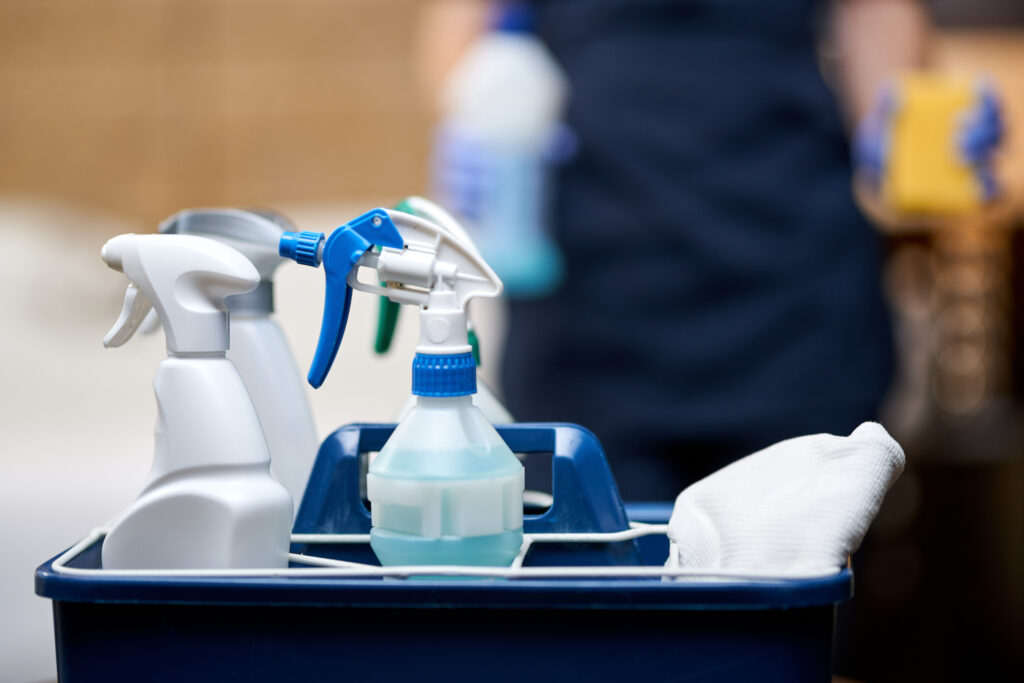Why Cleaning Products Deserve a Second Look
In our quest for hygiene, many modern cleaners come loaded with chemicals that are harmful to both health and the environment. From fragrance compounds to surfactants and preservatives, the typical cleaning aisle is a cocktail of complex substances—many of which are not fully disclosed on labels.
Understanding what’s inside your cleaners helps reduce indoor air pollution, protect your skin and lungs, and make more sustainable choices.
The Usual Suspects in Conventional Cleaners
1. Surfactants (Cleaning Agents)
These are the ingredients that “cut grease” or lift dirt. Common types include:
- Sodium lauryl sulfate (SLS)
- Nonylphenol ethoxylates (NPEs)
- Quaternary ammonium compounds (quats)
Concerns: Skin irritation, endocrine disruption, aquatic toxicity
2. Fragrances
Often listed simply as “fragrance” or “parfum,” this term can include hundreds of chemicals, including:
- Phthalates (used to make scent last longer)
- Synthetic musks
Concerns: Allergens, hormone disruption, asthma triggers, bioaccumulation
3. Preservatives and Antibacterials
Used to extend shelf life and kill microbes:
- Triclosan (banned in soaps but still found in other products)
- Methylisothiazolinone
- Formaldehyde releasers
Concerns: Skin sensitization, environmental toxicity, resistance concerns
4. Solvents and Propellants
Found in sprays, degreasers, and glass cleaners:
- Butoxyethanol
- Ammonia
- Isopropyl alcohol
Concerns: Respiratory irritation, nervous system effects, smog formation
5. Optical Brighteners and Dyes
Added to laundry detergents and surface cleaners to enhance appearance, not performance.
Concerns: Skin irritation, persistence in waterways
Health and Environmental Risks
- Indoor air pollution from VOCs
- Skin contact and eye irritation
- Bioaccumulative effects in aquatic ecosystems
- Antibacterial overuse contributing to resistant strains
What “Green” Labels Often Miss
Terms like “natural,” “non-toxic,” or “eco-friendly” are unregulated in most regions.
Look for certifications instead:
- EPA Safer Choice
- EcoLogo
- Made Safe
- EWG Verified
Safer Alternatives to Conventional Ingredients
Instead of SLS and NPEs:
- Coco glucoside, sodium cocoyl glutamate (gentler surfactants)
Instead of synthetic fragrance:
- Essential oils (lavender, citrus, tea tree — used sparingly and diluted)
- Fragrance-free options
Instead of harsh preservatives:
- Citric acid, ethanol, or gluconolactone in low-toxin blends
Instead of bleach and ammonia:
- Hydrogen peroxide
- White vinegar
- Castile soap
DIY Cleaning Recipes (Simple & Effective)
All-Purpose Cleaner
- 1 cup water
- 1 cup white vinegar
- 10 drops essential oil (optional)
Glass Cleaner
- 2 cups water
- 2 tbsp vinegar
- 1 tbsp rubbing alcohol
Scrubbing Paste
- ½ cup baking soda
- Enough water to make a paste
Common Questions About Chemicals in Cleaners
Are natural cleaners as effective?
Yes—for general cleaning. Disinfecting high-risk areas may require EPA-approved products.
Is vinegar really a disinfectant?
It kills some bacteria but not all viruses or spores. Use hydrogen peroxide or approved disinfectants for critical areas.
Can fragrance-free still have chemicals?
Yes—“fragrance-free” means no added scent, but other chemicals may still be present.
What’s the biggest red flag in cleaners?
“Fragrance” or “parfum” with no further detail. This usually signals undisclosed synthetic compounds.
Final Thoughts: Clean Smarter, Not Harsher
You don’t need harsh chemicals to have a clean home. With safer ingredients and a little label literacy, you can reduce your exposure, protect your indoor air, and make choices that are gentler on the planet.
Being informed is the first step. The second? Making swaps that serve your home and health—not just your sense of scent.









Reader Interactions